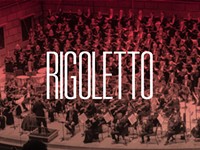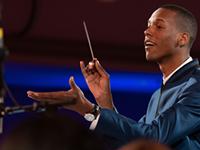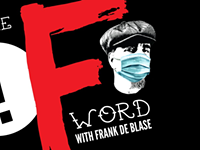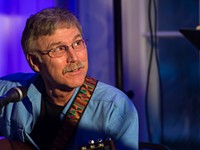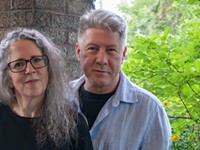Friday, May 31, 2013
CONCERT REVIEW: RPO’s “The Rite of Spring, and Rachmaninoff”
Posted By Paloma Capanna on Fri, May 31, 2013 at 12:32 PM
Guest conductor Tito Munoz pulled out all the stops Thursday night as he conducted the Rochester Philharmonic Orchestra in Igor Stravinsky's "Le Sacre du printemps" ("The Rite of Spring"). The musicians of the orchestra filled the stage, including no fewer than 10 kettledrums and a gong struck by a huge mallet. It was precisely the kind of chandelier-rattling sound Stravinsky intended, and it left me wondering why the word "spring" appears anywhere in the title. It was clear that Munoz not only knows, but loves this iconic piece by Stravinsky.
Also on the program, which will be repeated on Saturday night, was "Finding Rothko" by American composer Adam Schoenberg (b. 1980). Part of the 15-minute work inspired by painter Mark Rothko is available for previewing on the composer's website (AdamSchoenberg.com). Some of the longer, sustained notes captured the majestic emotions a viewer experiences when standing in a gallery, viewing Rothko's canvases. But was the piece true to Rothko, the artist? You'll have to let me know your thoughts, because I can't say I would ever have thought to use, for example, a triangle or the upper registers of metal xylophones to express either his work, particularly post-1947, or to describe my own reaction to his work. It was an interesting piece to hear, particularly on the same program as the Stravinsky.
The long work of the program was the Rachmaninoff Concerto No. 3 in d-minor for Piano and Orchestra, Op. 30, a work in three movements, of approximately 45 minutes in length. At the piano was Leonardo Colafelice, 17 years old, and the gold medalist of the 2012 Eastman Young Artists International Piano Competition, among other global piano contests.
Colafelice's performance raised every question associated with a young musician, competitions, and the bridge from competitions to professional orchestras. There is a line of argument in the classical-music world that puts these monster concertos on the "approved" list for contestant selection. There is a thrill among audiences who revel in watching a young person with hands blurred as they dash up and down the keyboard. There's even a willingness for some to say that they don't care if a young musician has missed notes because, "Just imagine how good it will be." And there can be an unheralded talent at the baton, when a conductor understands working with a young musician who is a guest soloist.
The issue I debated last night was whether to write a review considering Colafelice's age, or whether to write a review as if I didn't know how old he is. What I can say, having followed his performances during the competitive and final rounds in last year's Eastman competition, is that Colafelice is demonstrating measurable growth as a pianist. It is clear that he engages in disciplined practice and it is abundantly clear that his stage presence reflects the many, well-deserved bows taken by this young man.
But, I am going to raise the question of programming for Colafelice. Rachmaninoff is, by my sensibilities, the God of composers for the piano. Rachmaninoff is so much more than a beautiful melody or a flash of hands or the lowest of notes. Rachmaninoff is about artistry and about the complexity of emotions, especially love.
The opening theme, which repeats several times, is deceptive. It is a single note, the same in each hand. And yet, it is exquisite as a melody with phrasing. Each of those repetitions should be blocked off and pulled out and considered. What is the relationship of one to the next? What has happened in between to advance the story? Where will it eventually culminate, and how do you use the earlier presentations to build toward that end? The melody, most especially the first time it is played, is not a simple line of individual notes.
Another early consideration for any soloist with an orchestra is the relationship of the instrument to the orchestra. Just because the soloist is out in front does not stop the soloist from having to learn the complete score. So, for example, in the latter part of the first movement, there is a conversation between the piano, the flute, and the oboe. These three instruments should be speaking with each other and wrapping each other's sounds into a blend that pulls the orchestra along with it.
And so yes, I agree, I look forward to hearing Colafelice perform the Rachmaninoff third piano concerto some years hence. But, for me, on Thursday night the gap was too wide between a performance in a competition of peers, and a performance with a professional orchestra of the RPO's caliber.
The Rochester Philharmonic Orchestra will repeat the program Saturday, June 1, 8 p.m. at Kodak Hall at Eastman Theatre, 60 Gibbs St. Tickets cost $15-$82. For more information visit rpo.org.
Speaking of...
Latest in Music Blog
More by Paloma Capanna
-

The multisport multiverse
Apr 30, 2014 -
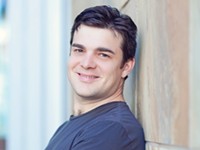
CLASSICAL | Rochester Philharmonic Orchestra
Apr 9, 2014 -
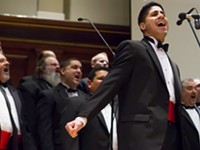
POP/CLASSICAL | Rochester Gay Men's Chorus
Mar 26, 2014 - More »
